
Types of pins
A pin is a small simple rod-like component used to align materials or distribute load. It can be of any shape or design, and manufactured from materials such as aluminum, stainless steel, brass, or even plastic.
The industrial relevance of these components is wide, so you will find many types of pins out there – taper pins, wire lock pins, L-handle pins, dowel pins, spring pins, and many more. All these are designed to meet specific engineering requirements, which are very diverse.
Given the many performance requirements and preferences from the user, the availability of different manufacturing processes for pins is also expected. CNC machining services are popular for their tight tolernances, repeatability, and versatility. Other manufacturing technologies include forming and forging.
Undoubtedly, there is so much about these simple-looking components. With this in mind, we present this thorough guide that not only outlines the different types of pins, but also delves into the materials, manufacucturing processes, and selection tips, and other areas.
What Are Pins?
Pins are simple often-rod-like fasteners used for many functions including alignment, load distribution, and retention. They are available in different shapes, sizes, and materials based on the specific function.
This definition is important to cover before even outlining the types of pins because it helps in choosing the ideal product to serve users with accuracy and confidence.
The Mechanical Characteristics Of Pins
The small size of the pin can be deceiving, but this component has several mechanical properties worth mentioning. The shape, material, head design, ease of installation and removal, and dimensions are some of the mechanical characteristics that are rightfully related to pins.
The effectiveness of the pin, regardless of the type, depends on how well these characteristics balance.
Pin Shape
While the cylindrical shape is the most popular, many custom shapes are available for pins. Unique shape options include clevis pins and taper pins.
Pin Material
Pins are made from diverse materials, both metals and nonmetals. The choice of material determines properties such as corrosion resistance, wear resistance, strength, and weight.
Pin Head Design
Some pins come with prominent head designs, for instance, the cotter pin, but others, for design purposes, flush with the surface of the item being fastened. This is the case for dowel pins.
Ease Of Installation And Removal
Just like the designs are more complex than others, the installation and removal ease of pins can differ extensively. However, most of these products are designed for flawless handling and usage.
Dimensions – Diameter And Length
When it comes to pin diameter and length, we realize there is a notable diversity. This comes from the wide and varied usage of these devices.
What Are The Types Of Pins?
The types of pins include cotter pin, dowel pin, spring pin, wire lock pin, and clevis pin. These and other options are available for use in projects, but it is important to choose the right one. There is always a right pin if the dealer or end user matches the design of the pin to the job.
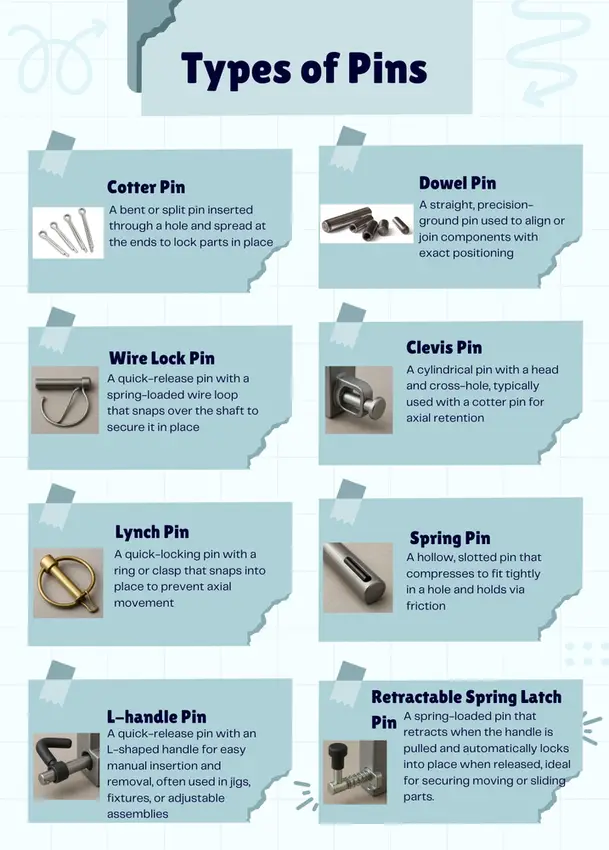
Different types of pins
Here is a coverage of each of the common types of pins in more detail.
Cotter Pins
These are characterized by split ends, which are necessary for applications such as locking nuts and bolts in mechanical assemblies. These types of locking pins are designed to deform after fastening, thus providing stable connections.
Dowel Pins
Also called straight pins, these ones are effective in holding parts together in machinery. They specifically help in ensuring alignment between machine parts. For CNC machining projects, these components are common in fixtures and molds.
Wire lock pins
As you can guess from the name, these pins are manufactured from wires. A popular application of these types of pins is the adjustment or removal of accessories from machines. They are mostly made of steel, which guarantees strength and durability.
Clevis Pins
Clevis pins are other special devices, this time usable in U-clamp connections. Stable and dependable, these pins are common in automotive, construction, and marine applications.
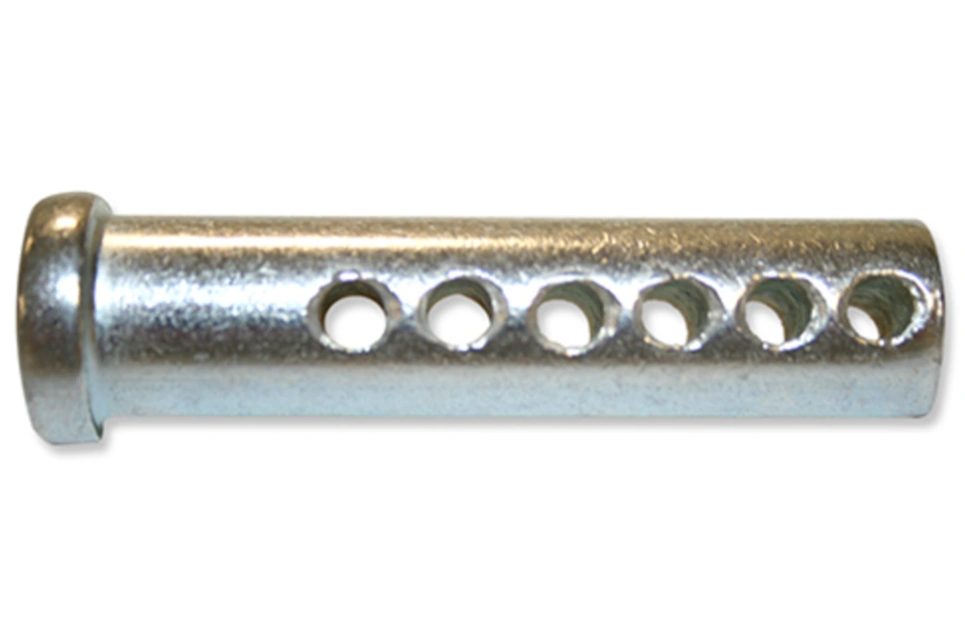
Clevis pin
Lynch Pins
Lynch pins are also appropriately called quick-release pins or safety pins because they are engineered for quick installation and removal. Their sizable head and tail enhance the ease of use.
Spring Pins
Spring or groove pins are cylindrical with a spring mechanism within to enhance alignment and fastening. Varieties of these pins include coiled spring pins and slotted spring pins.
L-handle Pins
With their L-shaped handles, these pins are some of the easiest to use. They are convenient to use in regular removal and installation applications, for example, machine adjustments or mold changes.
Retractable Spring Latch Pin
Retractable spring latch pins are commonly used in high-stress applications. They are versatile, easy to use, and durable.
Try Prolean Now!
How Pin Fastener Types Are Manufactured
The precision, strength, and suitability of a pin fastener to a project depends on several things, a prominent one being the manufacturing process. Whether CNC machining process, wire forming, or stamping, the manufacturing process chosen has a bearing on the pin’s performance.
As we discuss the manufacturing processes for pin fasteners in more detail below, note that choosing the option keenly can help you deliver the best quality pins to the user. Now to the manufacturing methods, starting with CNC machining.
CNC Machining Of Pins
CNC machining is a leading method of producing pins, especially for industrial applications. It is a perfect choice for custom and low-volume production of components, as this guide expounds: CNC Machining Explained. The main machining methods for pins are CNC turning, milling, grinding, and threading.
- CNC turning generates the cylindrical shapes of the pins
- CNC milling produces grooves and other non-cylindrical features of the pins
- Grinding is for producing the perfect surface finish on the pins
- Threading forms threads on pins that require such features
The suitability of these methods depends on factors such as the material’s chemical properties, hardness, machinability, and so on.
Wire Forming Pins
Wire forming entails drawing, straightening, and rolling a wire to produce the desired shape. After being bent to a specific angle, the wire is cut to size. Heat treatment and tempering may also be necessary to alter the mechanical properties.
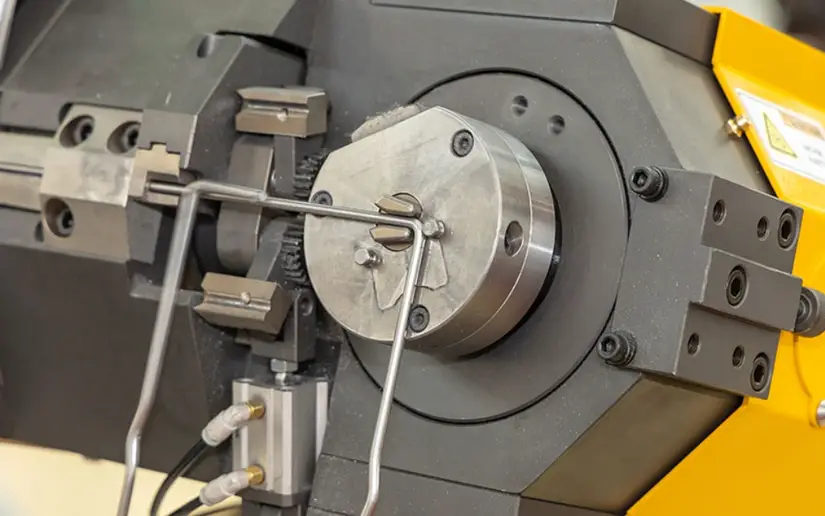
Wire forming
Cold (Cold Forging, Cold Forming)
In the cold forming method, raw material is formed into the pin shape by suppressing a wire into a die or two. The die bears the required geometry while the blow delivers the material upset.
Casting For Pins
Pins can also be produced through casting, the process of pouring molten metal into a mold and allowing it to solidify before removing the final product. The method is chosen when CNC machining the pins proves difficult.
Casting methods for pins are die casting, investment casting, and sand casting.
Powder Metallurgy
In yet another method of manufacturing pins called powder metallurgy, powders are blended, formed, sintered, and vibration ground. The resulting pin is then taken through secondary processing before being heat-treated and surface-treated to required standards. This method is suitable for pins of the most complex parts and custom material properties.
Related reads: 3 axis vs 5 axis cnc, https://proleantech.com/multi-axis-cnc-machining/
Different Materials For Making Pins
Pins can be generated from a wide range of materials, the choice of the ideal depending on factors such as corrosion resistance, wear resistance, and strength. We are talking about materials such as brass, stainless steel, aluminum, plastic, and titanium.
Here are more details of the different materials available at ProleanTech to help you choose the one that most suits your requirements.
Brass Pins
The main alloying elements of brass are copper and zinc, a reason why pins made from this material are attractive and corrosion resistant. You will mostly find brass pins in electrical connections and decorations. Users are drawn to the golden look of the metal, which complements the functional reliability of the material.
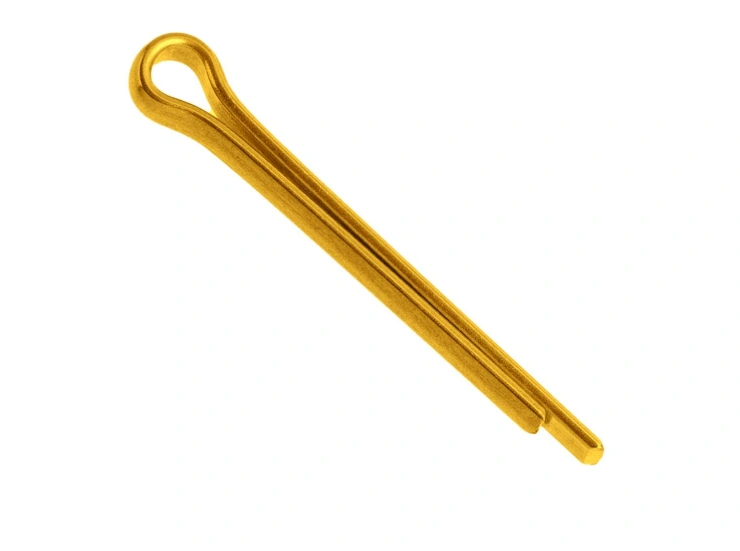
Brass cotter pin
Stainless Steel Pins
When it comes to using pins in corrosive and humid environments, there is nothing better than going for stainless steel ones. This material resists rust, so the pins will last for years. Furthermore, stainless steel pins have the material’s characteristic shiny, clean appearance.
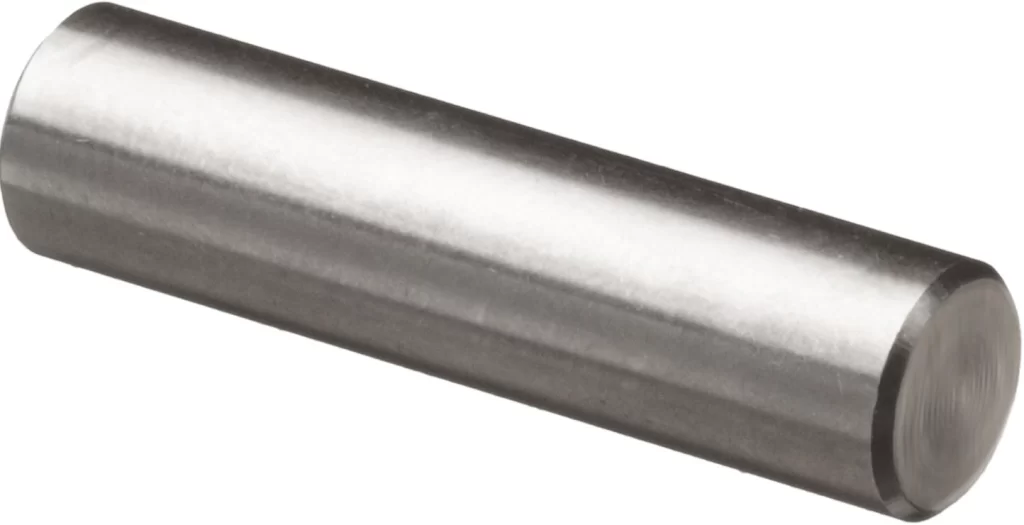
Stainless steel dowel pin
Aluminum Pins
A big advantage of aluminum types of pins is low weight, which perfectly aligns to the common functions of these components. Corrosion resistance coupled with electrical and thermal conductivity makes aluminum pins even more worth considering aluminum pins. Popular applications for pins with these properties are in electronics and radiators.
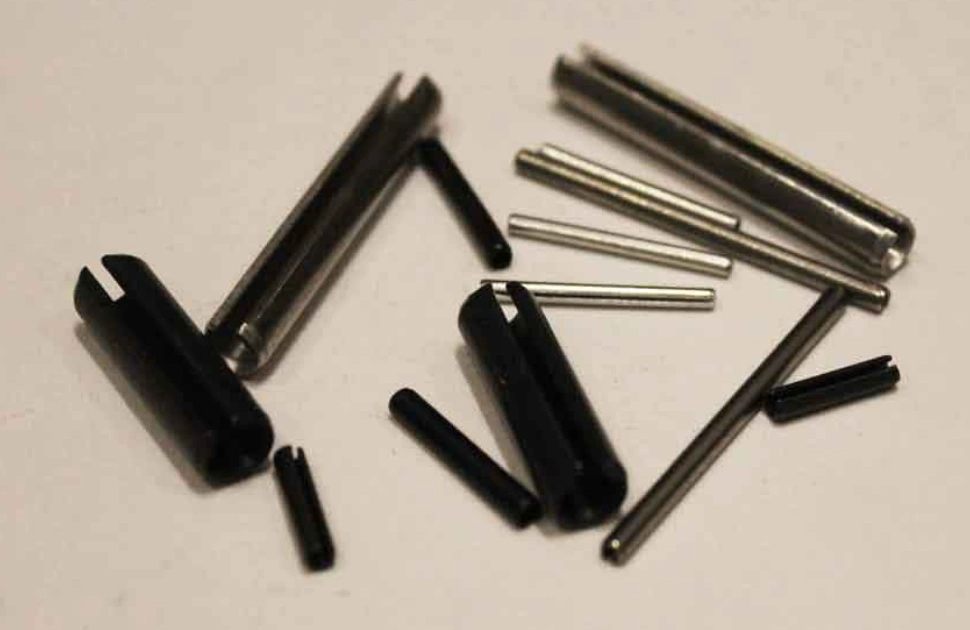
Aluminum spring pins
Titanium Pins
When the emphasis is on strength-to-weight ratio and wear resistance, an ideal material for pins is titanium. Not many eligible materials for pins have the same quality of physical properties as this silvery-gray transition metal.
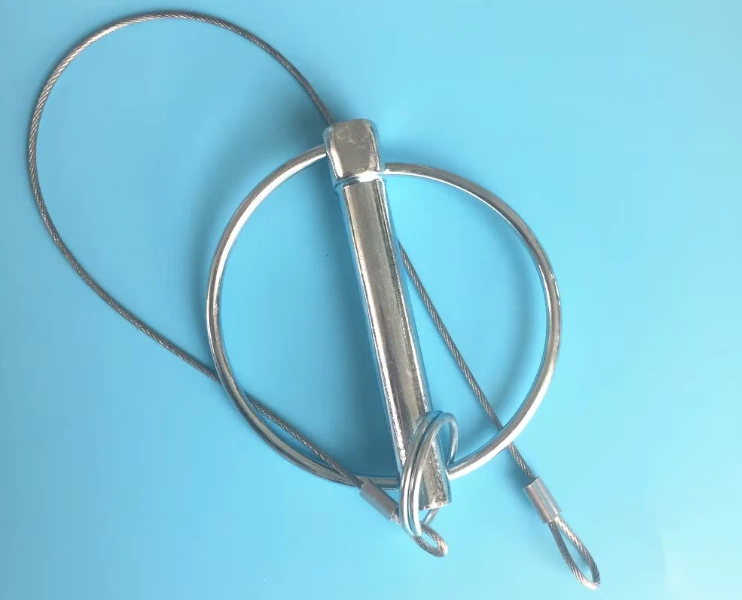
Titanium wire lock pin
Titanium’s biocompatibility is a major reason that pin users in the aerospace and medical fields have widely adopted it.
Plastic Pins
Sometimes, plastic pins are recommended for their safety, for instance, where children are involved. Conventional metal pins come with issues such as toxicity and sharp corners. Plastic pins are perfect for common children activities such as artwork and normal use at home to organize items.
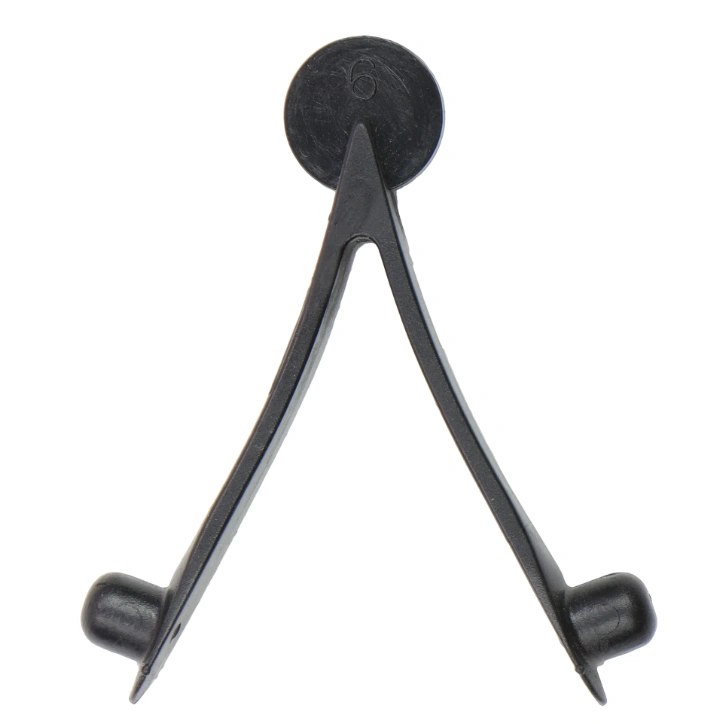
Plastic spring pin
Read also: composite machining
Try Prolean Now!
The Benefits Of Using Pins
Pins are a simple but cost-effective and reliable solution for joining and securing parts in mechanical assemblies. Their durability, versatility, and safety make sense for operations within many industries. If you are wondering how these elements or benefits apply for these components, let’s discuss them briefly.
Cost Effectiveness
Regardless of the style or design, pins are generally cost-effective to produce and use. Their simple designs and small sizes make it easy to manufacture them, even in large volumes. This is a big advantage for businesses that need to fasten many items.
Durability
Provided the right material is used, pins remain usable for a long time. Metals such as titanium and stainless steels make pins that can reliably secure equipment for years.
Versatility
Pin’s design doesn’t have to change every time the application changes. That speaks volumes about the versatility of the component. Many industries, from automotive to medical and aerospace to HVAC, use the items widely.
Safety
Using and adjusting pins in equipment is safe and relatively easy. Unlike many other comparable components, pins do not require thermal enhancements during adjustments or installations. This removes hazards such as electrocution.
Considerations To Make When Choosing A Pin Type
The shape and size of the pin matters, but there are other considerations such as material, capacity, and resistance. You should look at these areas when choosing a pin type to ensure you get the right fastener type. That is one of the ways to ensure customer and user satisfaction.
Shape And Size
Pins are manufactured in different shapes and sizes to match different application requirements. Where small pins are required, bigger ones are irrelevant, and vice versa.
It is common for precision machinery to use very tiny yet effective pins. Larger pins are common in backhoes and aircraft landing gears.
Material
The material of the pin is a serious consideration because it determines the durability, wear resistance, tensile strength, thermal conductivity, and many other properties.
Load Capacity
The manufacturer of a pin and the sourcer should also consider the loading capacity, seeing that these devices are exposed to various weights and stresses. The question should always be, what is the safe load for the pin?
Resistance To Wear And Temperature
Pins must have adequate resistance to wear and temperature to be suitable for some industries. This point is equally important when choosing these items, especially the specific design and material to be used.
Different Industrial Applications Of Pins
Pins are common in different industries and for diverse functions. It could be automotive for assembling parts or electronics and heavy machinery to secure parts. There are so many other industrial applications of these components, a few of which are outlined below.
Automotive Industry
Different types of pins are used in this industry. For example, the cotter pin is used in the wheels, shafts, and axles.
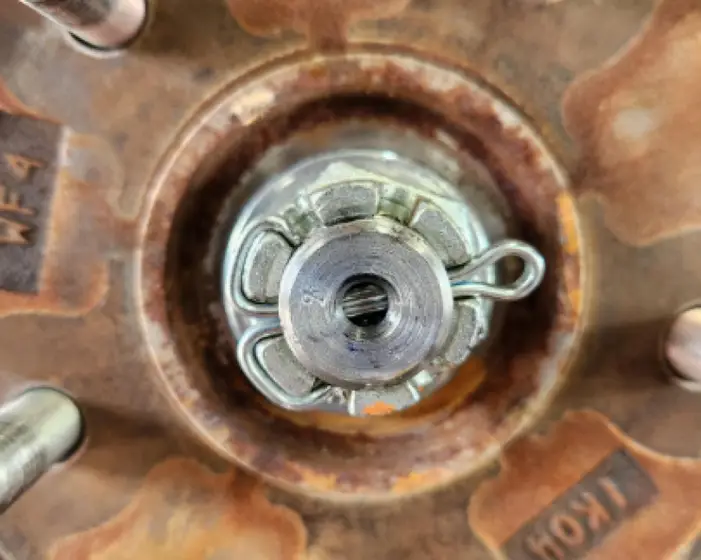
Cotter pin in car wheel
Heavy Machinery
For heavy machinery, dowel pins are some of the most prominent pin fasteners. They are mostly used in conjunction with other fasteners like screws.
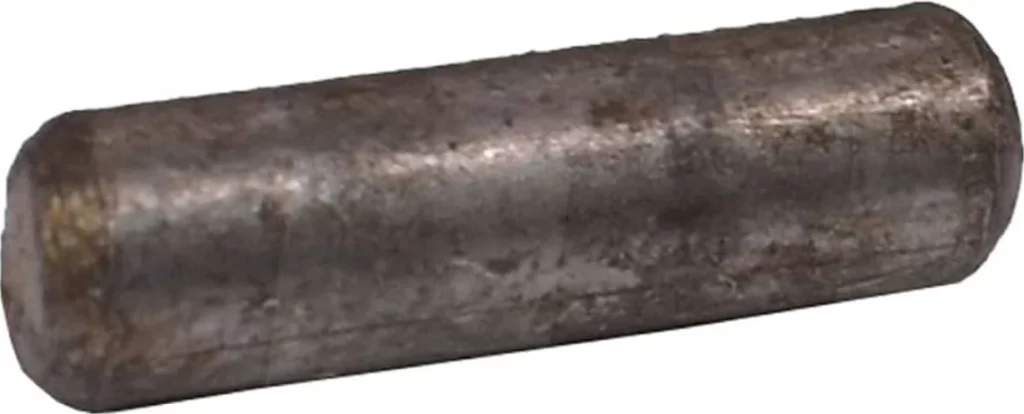
Dowel pin for heavy machinery
Medical Industry
Cotter pins and dowel pins are common in this sensitive industry. A major consideration for pin material is corrosion resistance, considering the corrosive environments common here.
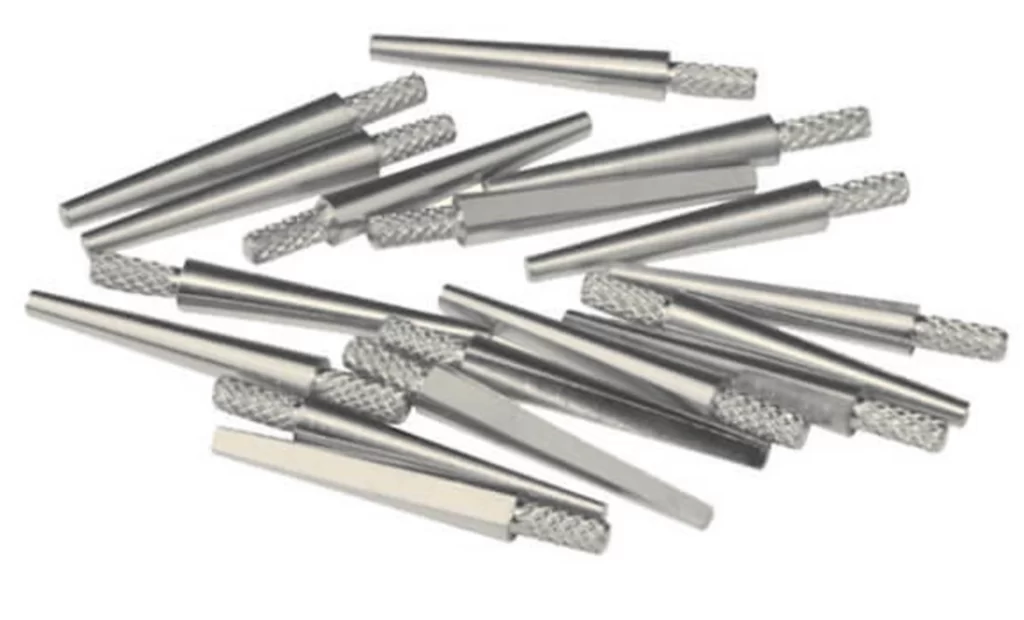
Dental dowel pins
Summing It Up
Pin fasteners are present in every facet of our lives, especially in the industrial setting. In this article, we have reviewed different types of pins, from cotter pin to lynch pin, and clip pin to dowel pin. The relevance, manufacturing processes, materials, and applications of these components have also been covered.
For the best choice of types of pins, consider their material, strength, diameter, strength, and other factors. If you are still unsure what pin to use, please get in contact with our experts team and our representative will guide you.
FAQs
What are the different types of cotter pins?
The different types of cotter pins are hairpin cotters, split pins, and tapered pins.
What are the different types of lapel pins?
The different types of lapel pins are 3D cast, die struck, and enable lapel pins.
What are the different types of pin joints?
The different types of pin joints are fixed pin joints, hinge pin joints, and movable pin joints.

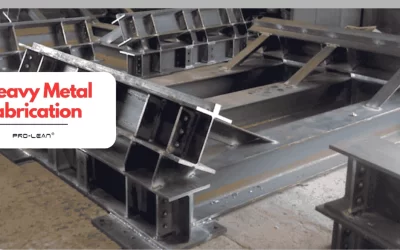
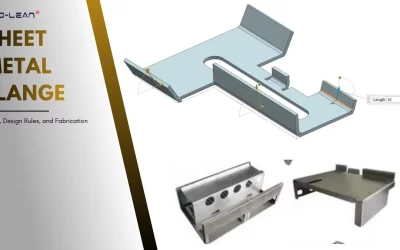
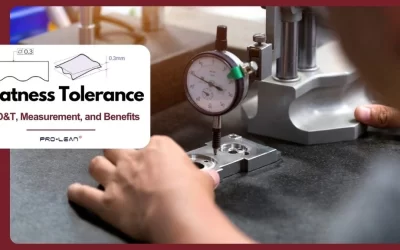
0 Comments